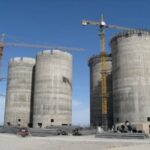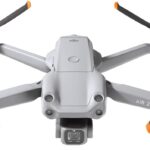Comparing Solar Panel Cleaning Using Robot and Labor

Efficiency
Robots: Solar panel cleaning robots are designed for efficiency. They can work continuously without breaks, ensuring maximum coverage and cleaning effectiveness. They are programmed to follow specific cleaning patterns to ensure every part of the panel is adequately cleaned.
Human: While humans can be efficient cleaners, they may not always achieve the same level of consistency as robots. Factors such as fatigue, distractions, and varying levels of skill can impact efficiency.
Accuracy
Robots: Cleaning robots can be programmed with precise cleaning patterns and algorithms to ensure thorough and accurate cleaning. They can detect areas that need more attention and adjust their cleaning accordingly.
Human: Human cleaners rely on their judgment and may not always clean every part of the panel with the same level of accuracy. There is a higher chance of oversight or missing spots, especially in hard-to-reach areas.
Safety
Robots: Cleaning robots are designed to operate autonomously, reducing the need for human intervention on rooftops or in hazardous environments. They are equipped with sensors to detect obstacles and ensure safe operation.
Human: Cleaning solar panels manually can pose safety risks, especially when working at heights or in adverse weather conditions. There’s a risk of falls, electrical hazards, and injury from slipping.
Cost
Robots: Initial investment in cleaning robots can be high, including the cost of purchasing the robots and any necessary infrastructure for their operation. However, in the long run, they can be cost-effective due to their efficiency and minimal ongoing labor costs.
Human: Labor costs associated with human cleaners can vary depending on factors such as wages, training, and insurance. While the upfront cost may be lower, recurring labor costs can add up over time.
Maintenance
Robots: Cleaning robots require regular maintenance to ensure optimal performance. This includes software updates, battery replacements, and repairs as needed. However, with proper maintenance, they can operate reliably for extended periods.
Human: Human cleaners may require less maintenance in terms of equipment but may require ongoing training and supervision to maintain performance standards. Additionally, there’s a risk of injuries or health issues that can impact their ability to work.
Environmental Impact
Robots: Solar panel cleaning robots can be designed to be environmentally friendly, using sustainable energy sources such as solar power or rechargeable batteries. They can also use eco-friendly cleaning solutions.
Human: The environmental impact of human cleaners largely depends on factors such as transportation methods, cleaning solutions used, and waste disposal practices. There may be a higher carbon footprint associated with human labor, especially if using non-renewable energy sources.
Scalability
Robots: Cleaning robots can be easily scaled up or down to accommodate varying sizes of solar installations. Additional robots can be deployed as needed to meet increasing demand.
Human: Scaling human labor may require hiring additional workers, which can be more challenging to manage and coordinate, especially for large-scale solar farms.
Conclusion
In summary, while both robots and human labor can be used for solar panel cleaning, robots offer advantages in terms of efficiency, accuracy, safety, and long-term cost-effectiveness. However, the choice between the two methods ultimately depends on factors such as the size of the solar installation, budget constraints, and specific operational requirements.




